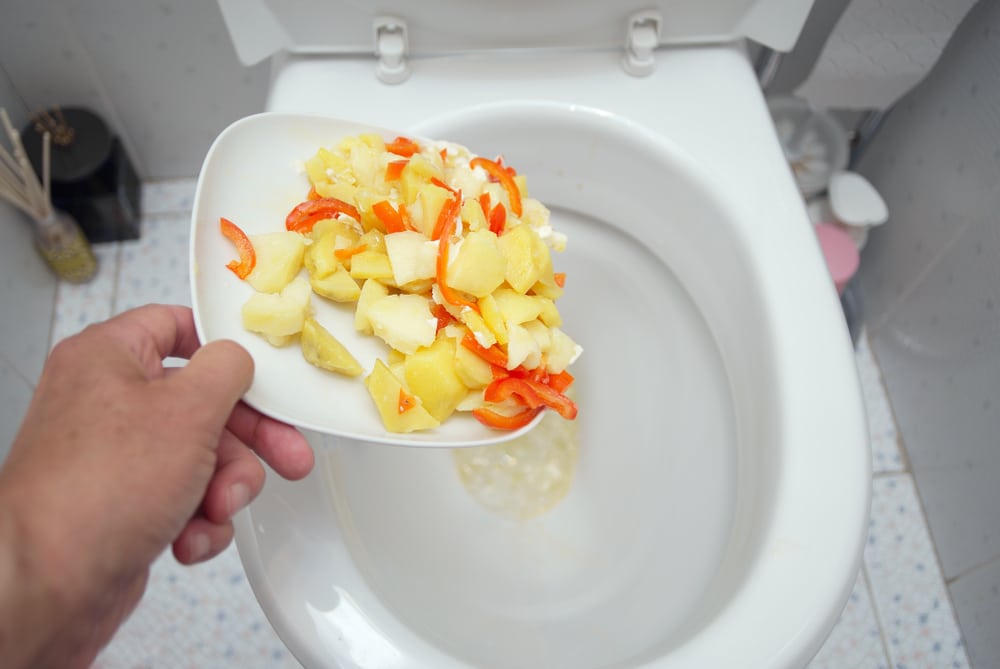Can You to Dispose of Food in the Toilet?
Can You to Dispose of Food in the Toilet?
Blog Article
The content on the next paragraphs on the subject of Think Twice Before Flushing Food Down Your Toilet is seriously intriguing. Don't bypass it.

Intro
Many individuals are usually confronted with the issue of what to do with food waste, specifically when it pertains to leftovers or scraps. One typical question that emerges is whether it's alright to flush food down the bathroom. In this short article, we'll look into the reasons individuals may consider flushing food, the repercussions of doing so, and alternative techniques for correct disposal.
Reasons individuals might think about purging food
Lack of understanding
Some people might not be aware of the possible harm triggered by purging food down the commode. They may erroneously believe that it's a harmless technique.
Ease
Purging food down the toilet may feel like a fast and easy solution to throwing away undesirable scraps, particularly when there's no close-by trash can offered.
Negligence
In some cases, people might merely choose to flush food out of large negligence, without thinking about the consequences of their activities.
Effects of flushing food down the bathroom
Environmental influence
Food waste that ends up in rivers can contribute to contamination and damage water ecological communities. In addition, the water made use of to flush food can stress water resources.
Pipes concerns
Purging food can lead to clogged up pipes and drains pipes, causing pricey pipes fixings and hassles.
Kinds of food that ought to not be flushed
Coarse foods
Foods with fibrous textures such as celery or corn husks can get entangled in pipelines and cause obstructions.
Starchy foods
Starchy foods like pasta and rice can absorb water and swell, causing clogs in pipelines.
Oils and fats
Greasy foods like bacon or food preparation oils should never be flushed down the commode as they can strengthen and create clogs.
Correct disposal approaches for food waste
Making use of a waste disposal unit
For homes outfitted with waste disposal unit, food scraps can be ground up and purged with the plumbing system. However, not all foods appropriate for disposal in this manner.
Recycling
Particular food product packaging materials can be reused, lowering waste and lessening environmental influence.
Composting
Composting is an eco-friendly way to get rid of food waste. Organic materials can be composted and used to improve dirt for gardening.
The relevance of correct waste administration
Decreasing environmental injury
Appropriate waste administration practices, such as composting and recycling, aid reduce pollution and maintain natural resources for future generations.
Protecting plumbing systems
By staying clear of the method of flushing food down the toilet, property owners can stop pricey pipes fixings and keep the honesty of their pipes systems.
Verdict
Finally, while it might be alluring to purge food down the commode for convenience, it is necessary to recognize the potential consequences of this activity. By taking on appropriate waste administration methods and throwing away food waste properly, individuals can add to much healthier plumbing systems and a cleaner atmosphere for all.
FLUSH FOOD DOWN THE TOILET?
FLUSHING FOOD CAN CAUSE BLOCKED DRAINS IN YOUR HOME
All of the plumbing fixtures in your home are connected to the same sewer pipe outside of your home. This outdoor sewer pipe is responsible for transporting all the wastewater from your home to the Council sewer mains. Even small pieces of food that go down the kitchen sink can cause problems for your sewer. It should therefore be obvious that flushing larger bits of food, such as meat, risks a clog in either the toilet itself or the sewer pipes. Flushing greasy food is even more problematic because oil coagulates when it cools, coating the interior lining of your pipes.
THE TOILET IS NOT A BIN
Food isn’t the only thing that people shouldn’t be flushing down the toilet. People use the toilet to dispose of all kinds of things such as tampons, makeup wipes, dental floss, kitty litter and even underwear. Water goes to great lengths to educate residents about the high costs and stress placed on wastewater treatment systems simply from people flushing the wrong stuff down the toilet. It costs taxpayers millions of dollars each year, and homeowners thousands in blocked drain repairs.
FLUSHING FOOD IS A WASTE OF WATER
Flushing food is a waste of our most precious resource - water. In June this year Level 1 water restrictions were introduced to protect water supply from drought conditions. Much of New South Wales continues to be affected by prolonged drought with recent figures revealing up to 97 per cent of the state remains in drought. Depending on whether you have a single or dual flush toilet, every single flush uses between five and 11 litres of water. In the current climate this is a huge amount of water to be wasting on flushing food that should be placed in the bin (or better yet, the compost).
https://www.jabplumbingsolutions.com.au/blog/can-you-flush-food-down-the-toilet

I hope you enjoyed reading our section on What Can Happen If You Flush Food Down the Toilet?. Thanks for taking the time to browse our posting. For those who appreciated our post please make sure you remember to pass it around. Many thanks for going through it.
Call Today Report this page